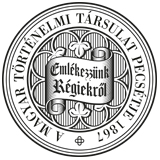Századok – 2004
Tanulmányok - Pálffy Géza: Koronázási lakomák a 15–17. századi Magyarországon. Az önálló magyar királyi udvar asztali ceremóniarendjének kora újkori továbbéléséről és és a politikai elit hatalmi reprezentációjáról V/1005
1100 PÁLFFY GÉZA FESTIVE CORONATION BANQUETS IN HUNGARY IN THE 15T H -17T H CENTURIES. ON THE SURVIVANCE OF THE TABLE CEREMONIAL OF THE INDEPENDENT HUNGARIAN COURT IN THE EARLY MODERN AGE AND ON THE REPRESENTATION OF THE HUNGARIAN POLITICAL ÉLITE by Géza Pálffy (Summary) Under the rule of Ferdinand I (1526-1564), and parallel to the formation of a common imperial court in Vienna, the independent royal courts of Hungary and Bohemia disappeared almost for all. Nevertheless, in both kingdoms survived an event which can be regarded as a reincarnation of at least a part of the former ceremonies of the medieval courts, namely the ceremonial of the public banquets. Its existence was connected to the so-called coronation banquet (in German Krönungsmahl/Krönungsbankett), the last phase of the secular part of the coronation of kings and queens in medieval Hungary and Bohemia. This was the only occasion when the office-holders of the late medieval Hungarian court, whose functions had become purely nominal (such as the master of the horse, the master of the janitors, the master of the dapifers and that of the cupbearers), could discharge at least some of their former duties. The study offers a profound examination of this process, unique perhaps even from a European point of view, with regard to the period from 1476 to 1712, with a quick look at its afterlife until 1916. The author's aim is to contribute to the European research of ceremonies, representation and civilisation whose upswing began some twenty years ago. On the basis of archival research in Vienna and Budapest it can be stated that even the coronation banquet of Charles IV in 1916 had elements of table ceremony which can be traced back to the late Middle Ages. This concerns particularly the service around the table of the titular officials of the former Hungarian medieval court as well as that of the use of occasionally appointed, exclusively Hungarian carvers (dapifers). These traditions survived for centuries virtually unaltered mainly thanks to the proposal of the Hungarian councillors in 1563, which illustrates perfectly the strength of the Hungarian political elite and its efforts at self-representation. Yet compared to the late Middle Ages important changes occured in the 16t h and 17t h centuries both in the sitting order and in the service around the table (Tafeldienst). Whereas the court of Wladislaw II and Louis II at Buda had been as open and licentious an institution as its English and French counterparts, the court of Ferdinand I in Vienna was characterised by a strict ceremonial of Burgundián origin and by the Spanish etiquette, just like the court of Matthias Corvinus had been, under the influence of Beatrice of Aragónia, from 1476 to 1490. This transformation manifested itself in the number of persons seated at the ruler's table during the public banquets. Although in October 1527 Ferdinand I, in order to legitimize his rule in Hungary, was obliged to seat together with the entire Hungarian ecclesiastical and lay elite, at the banquet of his son, Maximilian, which was held in 1563 at Pozsony, the Hungarian political elite was, in the lack of a palatine, represented by the only archbishop of Esztergom, who carried out the coronation. From this time on the sitting order of the banquets was prepared not by the Hungarian Master of the Court nor by the Hungarian councillors but by the Obersthofmeister in Vienna according to the common etiquette of the court of Vienna. The archbishop was joined after 1608 by the palatine and then by the archbishop of Kalocsa from 1618. They continued to sit at the royal table until 1916, at growing distance from the head of the table according to their rank. Yet the appearance of the archbishop of Kalocsa also showed that the ceremonial of the Hungarian coronation banquets was not transformed entirely by foreign influences. For we have good reason to suppose that this fact was directly connected to the political struggle between the two chief figures of the Hungarian leading elite, namely the archbishop of Esztergom and the palatine, and to their consequent rivality in the field of political representation. Although in 1618 the influential archbishop of Esztergom, Péter Pázmány, managed to preserve his leading position by inviting to the table his colleague of Kalocsa, in 1638 the likewise respected palatine, Miklós Esterházy, immediately secured for himself the privilege of pouring water onto the hands of the freshly crowned king or queen before the dinner, thereby manifesting his primacy at the first important phase of the banquet over the archbishop, who consequently handed over the towel. By this sequence of events the palatine clearly indicated to the spectators of the banquet that it was he who had the leading role in the political life of Hungary. The situation remained the same until the beginning of the 20th century The increasing role of the palatine was also showed by the fact that from the 17t h century he had the
